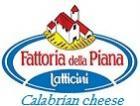
|
||||||||||||||||||||||||||||||||||||||||||||||||
|
||||||||||||||||||||||||||||||||||||||||||||||||
|
|
Calabria Cheese
It is then plunged into a mixture of water and whey at a temperature of approx. 80°C and is hand-modelled into a truncated-cone shape, as for the provola, or into a pear shape as for the scamorza, which can also be smoked. The provola has a sweet taste when not smoked, or otherwise it acquires a rather strong aromatic taste. An excellent ingredient in the most elaborate dishes or just grilled, bread-crumbed and fried. Caciocavallo : The etymology of the denomination "Caciocavallo Silano" comes from the name of the plateau of the Sila. On the contrary, the name caciocavallo (cheese + horse: "horse When on the plateau of the Sila there was not yet the fixed stabling, the caciocavallo was produced exclusively in the period between spring and summer from cattle of the Podolica Breed, in the wooden huts cowherds, called vaccarizzi. The cheese must last for a long time because it represented a supply of food for the cowherds and for the great herd owners. The production area of the Caciocavallo Silano is the widest production area among the ones interested in the production of cheeses with origin appellation (a special recognition of quality). The pasteurized milk is brought to 35°C with the addition of calf's rennet. After coagulation, the curd is broken. The paste is let mature under hot whey for several hours, then it is drained upon a dripping table. The paste is let age for 3 to 4 days cut into pieces. "Spinning" will take place later on in water at a temperature of 80 to 85 degrees. Salting is carried out in pickle bet. 2 and 12 hours, according to the weight. It is let mature for a month in a fresh airy room, where the shaped cheeses are hung in a couple "on horseback" of a horizontal pole. Seasoning goes on for 3 months up to one year in a cellar at constant temperature. The paste is raw and "spun" if seasoned for a long time and friable, scaly and white / golden yellow-coloured, homogeneous and compact or with slight eye-like-spots. Its taste is sweet and buttery when half-seasoned, while it is spaicy when advanced in seasoning.
It can be tasted during meals at table or on plain pasta, it gives a very sweet taste of milk enzymes. The working of butirro takes place between spring and summer, when animals are lead to the mountain pastures. The butter worked and packed keeps unchanged until the end of summer, when herds come back down to the valley. In the past along the route of transhumance people bought the cheese in exchange for other products. The "spun" paste constituting the butter covering is obtained from the working whey of caciocavallo, scamorze, provole or mozzarella. From the heated whey emerge the flakes that are placed into a cold container for about half an hour and then moved onto a length of cloth, where they remain for 24 hours. The mass obtained is then worked in a wooden container. After that the butter is modelled so as to take an elongated round shape and then covered with "spun" paste and pickled for another 12 hours. RICOTTA (COTTAGE CHEESE) : This goat's milk-based cheese is After seasoning, it is grated on first courses seasoned with sauces, while fresh it is excellent with tomato salads. Goat's milk (but also cow's and sheep's) is heated up to approx. 90C° and later on brought back to the previous temperature of 37°C adding whey into the paste. After breaking and a proper rest, the curd is put into small wicker baskets and let drop for about 12 hours. 3-4 days later it is dry-salted and let mature in an airy room. Its taste is sourish-sweet, spicier when seasoned.
PECORINO (SHEEP'S MILK CHEESE) : Pecorino is a seasoned hard cheese made with a single milking of sheep's or goat's milk and generally spicy or covered with ground red hot pepper.
|

|
||||||||||||||||||||||||||||||||||||||||||||||
|
||||||||||||||||||||||||||||||||||||||||||||||||
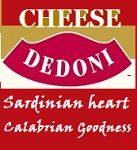
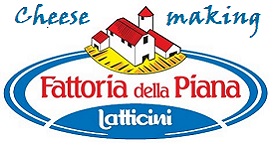
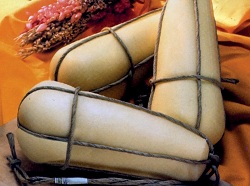 Provola : When the warm winds risk of endangering the seasoning of caciocavallo, in order to avoid losses, small producers make provole and scamorze to be eaten in the short run, in dialectal expression called "provula". Cow's milk is coagulated with calf's rennet and, about 40 minutes later, the paste is pulled out with a length of cloth and let age between 6 and 48 hours, according to the temperature.
Provola : When the warm winds risk of endangering the seasoning of caciocavallo, in order to avoid losses, small producers make provole and scamorze to be eaten in the short run, in dialectal expression called "provula". Cow's milk is coagulated with calf's rennet and, about 40 minutes later, the paste is pulled out with a length of cloth and let age between 6 and 48 hours, according to the temperature. 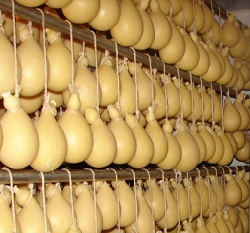 -cheese") comes form the well-established technique of seasoning of the product, which is tied up into a couple "on horseback" of a support.
-cheese") comes form the well-established technique of seasoning of the product, which is tied up into a couple "on horseback" of a support. 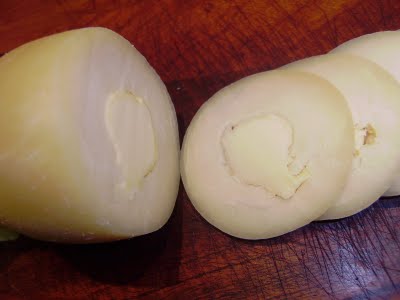 BUTIRRO : Butirro, in dialectal expression called "piticelle", is a typical cheese generally made using the paste of caciocavallo or provola, which is then filled with butter.
BUTIRRO : Butirro, in dialectal expression called "piticelle", is a typical cheese generally made using the paste of caciocavallo or provola, which is then filled with butter.  produced in the period when goats are dry, i.e. in summertime. Used as an alternative to mixed pecorino (sheep's milk cheese), its name comes from the kind of coagulation it undergoes, in part due to rennet, which acts on casein, and partly to the heating which unites the albumin in the curd.
produced in the period when goats are dry, i.e. in summertime. Used as an alternative to mixed pecorino (sheep's milk cheese), its name comes from the kind of coagulation it undergoes, in part due to rennet, which acts on casein, and partly to the heating which unites the albumin in the curd. 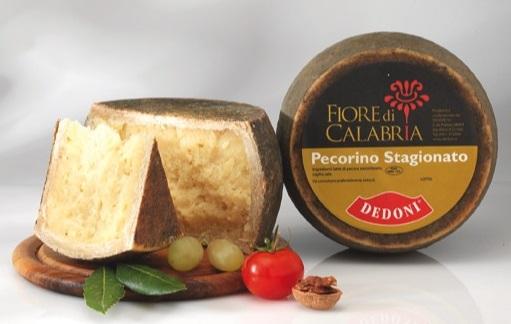
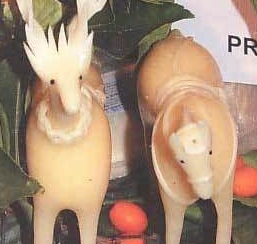 SMALL ANIMALS OF PROVOLA : In the municipality of Marcellinara mixed breed cow's milk is used for the production of a cheese in the typical shape of small horse wearing a mediaeval hardness, sometimes including the rider, or else in the shape of different animals. Their colour is straw yellow and they do not need any seasoning. They are often custom-made in order to set up gastronomic shows and their weight varies bet. 35 and 300 g.
SMALL ANIMALS OF PROVOLA : In the municipality of Marcellinara mixed breed cow's milk is used for the production of a cheese in the typical shape of small horse wearing a mediaeval hardness, sometimes including the rider, or else in the shape of different animals. Their colour is straw yellow and they do not need any seasoning. They are often custom-made in order to set up gastronomic shows and their weight varies bet. 35 and 300 g.
